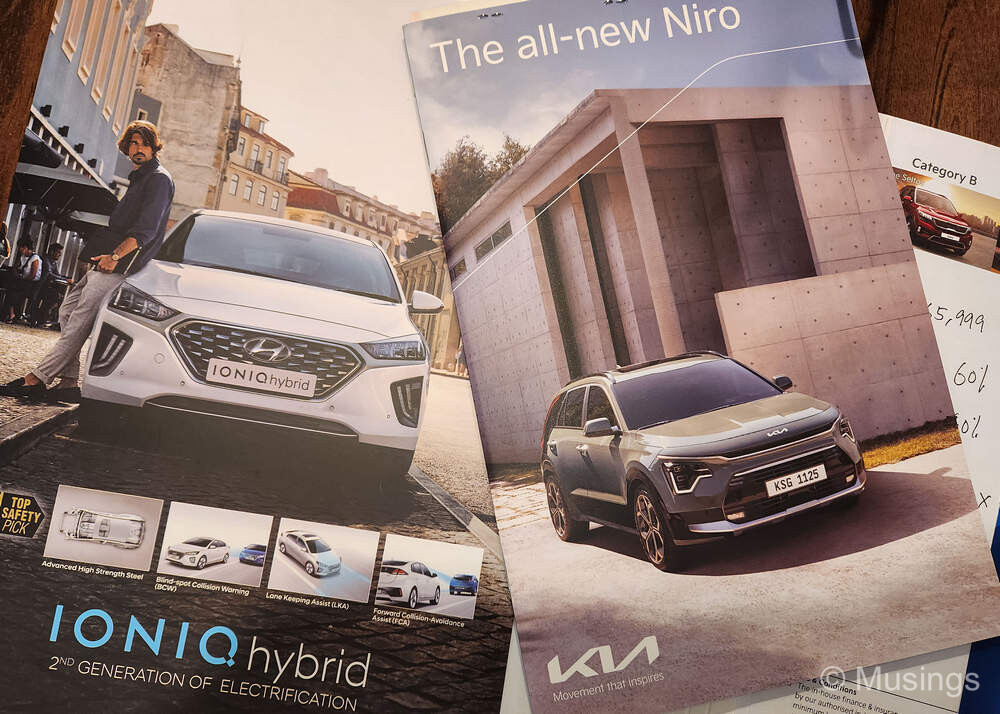While looking through the blog notes here for our purchase of our Mazda 3 seven and a half years ago, I realized something funny: the oddities that we noticed with the then new car persisted for the next 7.5 years. And over our period of use since 2015, additional things and little failures continued to show up. To be sure, we didn’t have a single accident with the Mazda, and the car dutifully got us where we needed to each time, safely and securely. But whether it’s an inevitable characteristic of modern cars these days that are wired to the brim with electronic features that are simply prone to failure, or just our bad luck, the additional failure points of the car were:
Side-view mirrors that would not retract.
iStop – the vehicle’s fuel-saving mechanism that kills the engine at temporary stops – started acting up a year ago.
Speakers likewise started failing a year ago.
A couple of times the LCD info-entertainment display wouldn’t start up at all.
That’s not counting the oddities we saw from the very onset: including rain-sensing windscreen wipers that continued to have a mind of its own when it came to sensing rain, and the MP3 player which could rarely remember what was last played. This was all very disappointing, since 7 years ago, we’d intentionally preferred a Japanese-made car on account of its perceived quality and reliability.
So, at the start of this year we both had about enough, and decided it was time to look for a new ride. Except we were both caught up with work, and by the time we started putting together serious plans to look into replacing our Mazda 3, the COE prices were at an all-time high and not projected to come down much anytime soon. Just bad luck I guess. But we finally got down to it in October, and with these requirements in mind:
Not a Mazda. I would had finally been OK if we went with a Mazda 3 Hybrid. But the wife used her veto power with a loud and clear “No thanks to Mazda.”
A hybrid car: we were sold on the economical use of fuel, and also doing our little bit to go green.
Engine capacity of 1,600cc or so.
Well, the number of hybrid cars that met the above requirements and that were also below our budget weren’t that many: and after the usual market research, it came down to two models: the Hyundai Ioniq Hybrid, and the Kia Niro Hybrid. Unlike 2015, this time round, we were largely agnostic about the country of manufacture.
As it turned, the car showrooms for both car manufacturers were quite nearby each other. So, two test drives later on this Deepavali holiday, and a very hard decision to make later, we decided on the Kira Niro Hybrid.

More in the next post!
Haven’t heard from you about the car updates with regards to driving and handling…how’s that been so far?
Oh hi there. Sorry: didn’t see your comment. We like this now-semi-new ride – the Kia Niro Hybrid, though this is our first hybrid or electric car, so we don’t have much to compare it with! But handling is smooth, the passenger and driver compartments are sufficiently large, and the number of safe driving features are great, especially the blind spot detection and lane departure. Just one niggling annoyance: there’s some odd creaking noise emanating from the rear passenger door, so we need to have that looked at in the next car servicing.
No problem at all – was thinking you would roll out a post on the new car experience. How was the driving experience and pick-up/acceleration like? I understand hybrid cars tend to be quieter by virtue of their working (ie they go into electric mode on acceleration and the combustion engine takes over at higher speed or cruising). Thinking of getting a hybrid vehicle soon and deciding between this and the Altis hybrid.
Hi there again. Well, we’re not demanding drivers, and our rides are really meant to be just largely short trips between home and our work places. I reckon our actual usage is perhaps 70% main roads and 30% expressway. The acceleration feels pretty normal compared to our previous car – the Mazda 3. The quieter working of the hybrid was indeed noticeable initially, particularly when we’re traveling under 50 km/h. But these days, we’re gotten used to it and don’t notice it anymore – but I reckon if we ever go back to an ICE type car, we’d notice the engine noise immediately!
One thing we really like too about this hybrid: the near instant car start-up and shut-down. Once we power on the car, the car is ready to go in 3-4 seconds, and there’s little sense that the car is struggling to rev up. When we’ve parked and power it off, the engine shut down is also near instant.